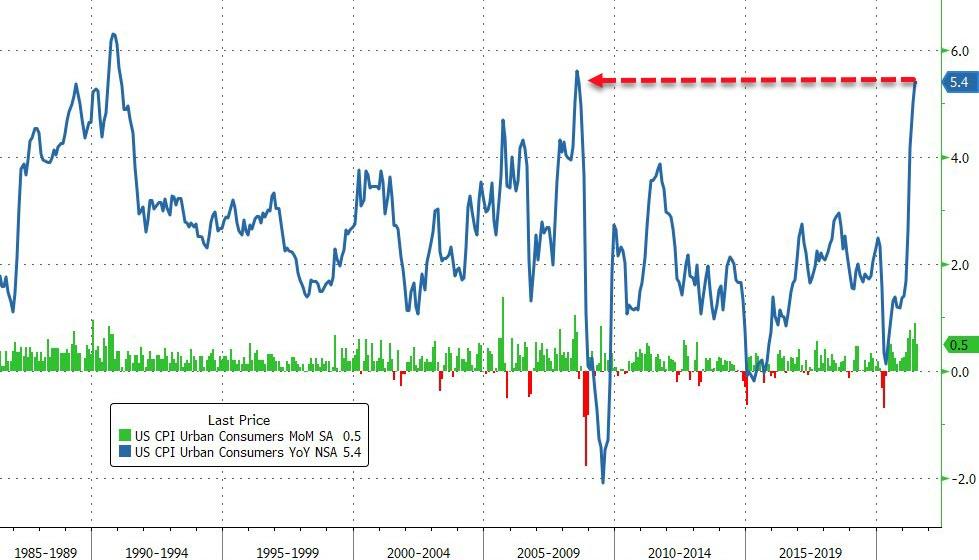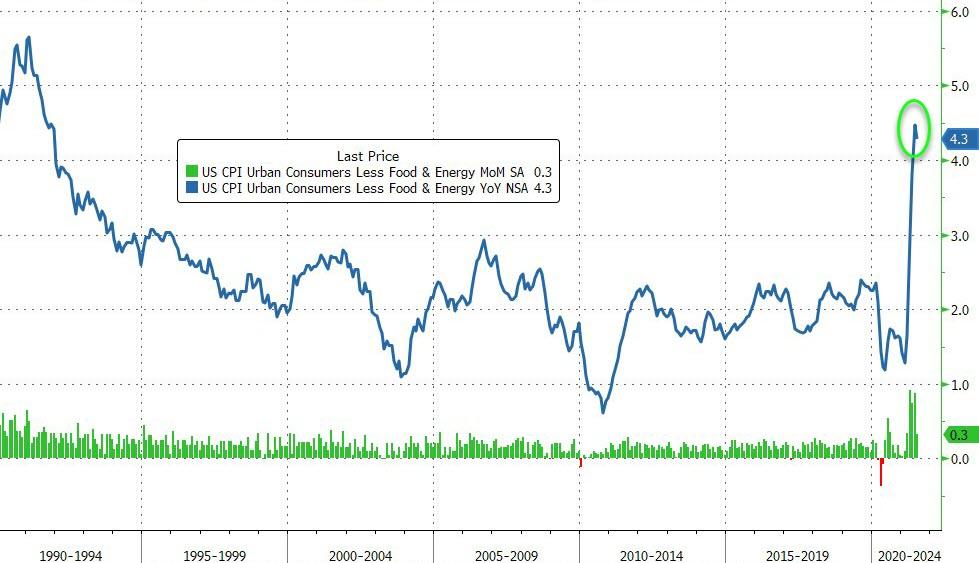The U.S. Bureau of Labor Statistics reported today that its consumer price index rose 5.4% in July from a year earlier, in line with June’s figure and matching the largest jump since August 2008. On a monthly basis, consumer prices rose 0.5 % in July, the least since February's 0.4 % gain. Main upward pressure came from food, new cars and shelter while energy costs and new cars increased the most.

The US consumer price inflation rate still remains at a 13-year high and reflects the low base effect, the re-opening of the economy and continued supply constraints. Source: Bloomberg via ZeroHedge
Start investing today or test a free demo
Create account Try a demo Download mobile app Download mobile appBut investors were concentrating on the core rate of inflation which stands at 4.3 % in July compared to 4.5 % in previous month and in line with analysts’ estimates. The index for used cars and trucks increased 41.7 % from a year earlier and the index for new vehicles rose 6.4 %, the largest 12-month increase since the period ending January 1982. The shelter index increased 2.8 % over the last 12 months. On a monthly basis core inflation rose by 0.3% last month, slightly below analysts' expectations of 0.4% increase and well below June's rise of 0.9%.

Core CPI retreated slightly from its recent highs, but still remains elevated. Source: Bloomberg via ZeroHedge
From one hand, today's reading may suggest the inflation surge may have reached local peaks, as the core index rose just 0.3% in July, its smallest monthly increase in 4 months. This lifted market sentiment, even despite the fact that the last NFP report pointed to increasing pressure on prices from the labor market. If inflation has theoretically reached its peak, pressure for the Fed to change monetary policy in the near future will weaken. On the other hand, the Fed may want to start reducing its ultra-loose monetary policy, which is related to the fact that the US authorities have passed huge fiscal programs for the economy. In theory, this could mean that the Fed no longer needs to supply that amount of cash to the market. On the other hand, fiscal programs will not finance themselves and additional indebtedness will be necessary, which means that the authorities will allow the asset purchase program to continue and maintain low bond yields. This, of course, could lead to an increase in speculative bubbles in the stock market, real estate and commodities markets.

